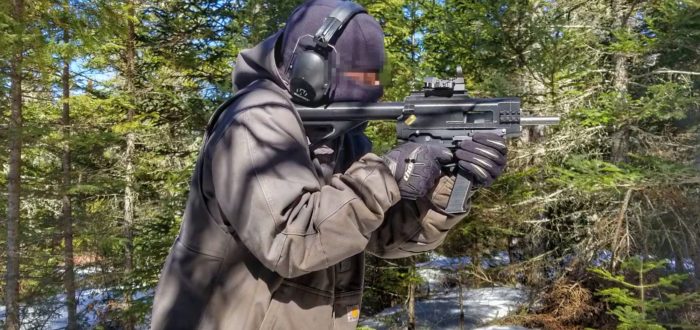
3D Printed Firearms
Share
The Evolution of 3D-Printed Firearms
The advent of 3D printing technology has revolutionized various industries, and the firearms industry is no exception. The journey of 3D-printed firearms is one that intersects innovation, controversy, and the quest for decentralized manufacturing. This article delves into the history and development of 3D-printed firearms, key players in the community, and the role of online platforms like FOSSCAD.
The Genesis of 3D-Printed Firearms
The concept of 3D-printed firearms first garnered significant attention in 2013 when Defense Distributed, an American non-profit organization, released plans for the world's first downloadable gun, called the "Liberator." This single-shot pistol was primarily made from plastic and could be reproduced by anyone with access to a 3D printer. The release of these plans marked a watershed moment, as they were downloaded over 100,000 times within just two days.
Subsequent years saw an acceleration in the development of more sophisticated 3D-printed firearms. Defense Distributed continued to innovate, creating the first-generation 3D-printed AR-15 receivers and magazines. Despite legal battles with the U.S. Department of State, the organization persevered, eventually leading to a 2018 settlement that allowed them to publish blueprints for 3D-printed firearms online.
Key Innovators
- Cody Wilson: Cody Wilson, the founder of Defense Distributed, is a pivotal figure in the 3D-printed firearms community. His relentless advocacy for open-source gun designs challenged regulatory frameworks and ignited debates on gun control. He has since gained ire from the community over CSA allegations and “DEFCAD” (FEDCAD) which collects sensitive private information and has drawn criticism over charging money for free files.
- JStark1809: Known pseudonymously, JStark1809 was a Kurdish-German designer who created the FGC-9, one of the most popular 3D-printed guns3. His designs emphasized ease of production and accessibility, significantly impacting the global 3D-printed firearm movement. RIP
- Ivan The Troll: Known for his work on various famous 3D-printed gun models, Ivan the Troll is one of the most active and influential figures in the FOSSCAD community. His designs, including the DIY AR-15 lower receivers, have attracted much attention and discussion.
- Hoffman Tactical: Hoffman is another prominent name in the FOSSCAD community, credited with creating the "Orca AR15" a semi-automatic 5.56/.223 firearm as well as the "Super Safety". His innovative designs have inspired many to explore the possibilities of 3D-printed firearms.
- Ctrl+Pew: Ctrl+Pew is a well-known designer and contributor who has also significantly impacted the community by providing resources, tutorials, and guides on 3D-printed firearms. He operates a website that serves as a hub for enthusiasts and designers alike.
- BlackLotusCoalition: Gage and the BLC team are a maintainer of the FOSSCAD Repository, a comprehensive library of CAD files, including those for 3D-printed firearms. This repository is a vital resource for the community, housing all previous and current designs.
These designers are just a few of the many talented individuals in the FOSSCAD community who are driving the advancement of 3D-printed firearms. Their contributions continue to shape the landscape of this ever-evolving field.
The Role of Online Communities
Online platforms have played a crucial role in the dissemination of 3D-printed firearm knowledge and blueprints. One such platform is the subreddit FOSSCAD, a decentralized community dedicated to the open-source development of firearms. FOSSCAD stands for "Free Open Source Software, Hardware, CAD, and Data" and serves as a hub for sharing designs, troubleshooting, and discussing advancements in the field.
The community emphasizes the importance of sharing information freely and legally and encourages members to adhere to local laws when engaging in 3D-printed firearm projects. The subreddit has been instrumental in fostering a collaborative environment where enthusiasts can learn and innovate together.
Legal Considerations
The rise of 3D-printed firearms has sparked significant legal and ethical debates. Proponents argue that it democratizes firearm access and empowers individuals, while critics emphasize the potential risks, including untraceable firearms falling into the wrong hands. Various countries have responded with differing legal frameworks, with some imposing strict regulations and others grappling with the challenges of enforcement.
Conclusion
The history and development of 3D-printed firearms is a testament to the power of innovation and the ingenuity of the maker community. As technology continues to advance, the conversation around the ethical and legal implications of 3D-printed firearms will remain a critical part of the discourse. Platforms like FOSSCAD and the efforts of key innovators will undoubtedly shape the future of this dynamic field.
